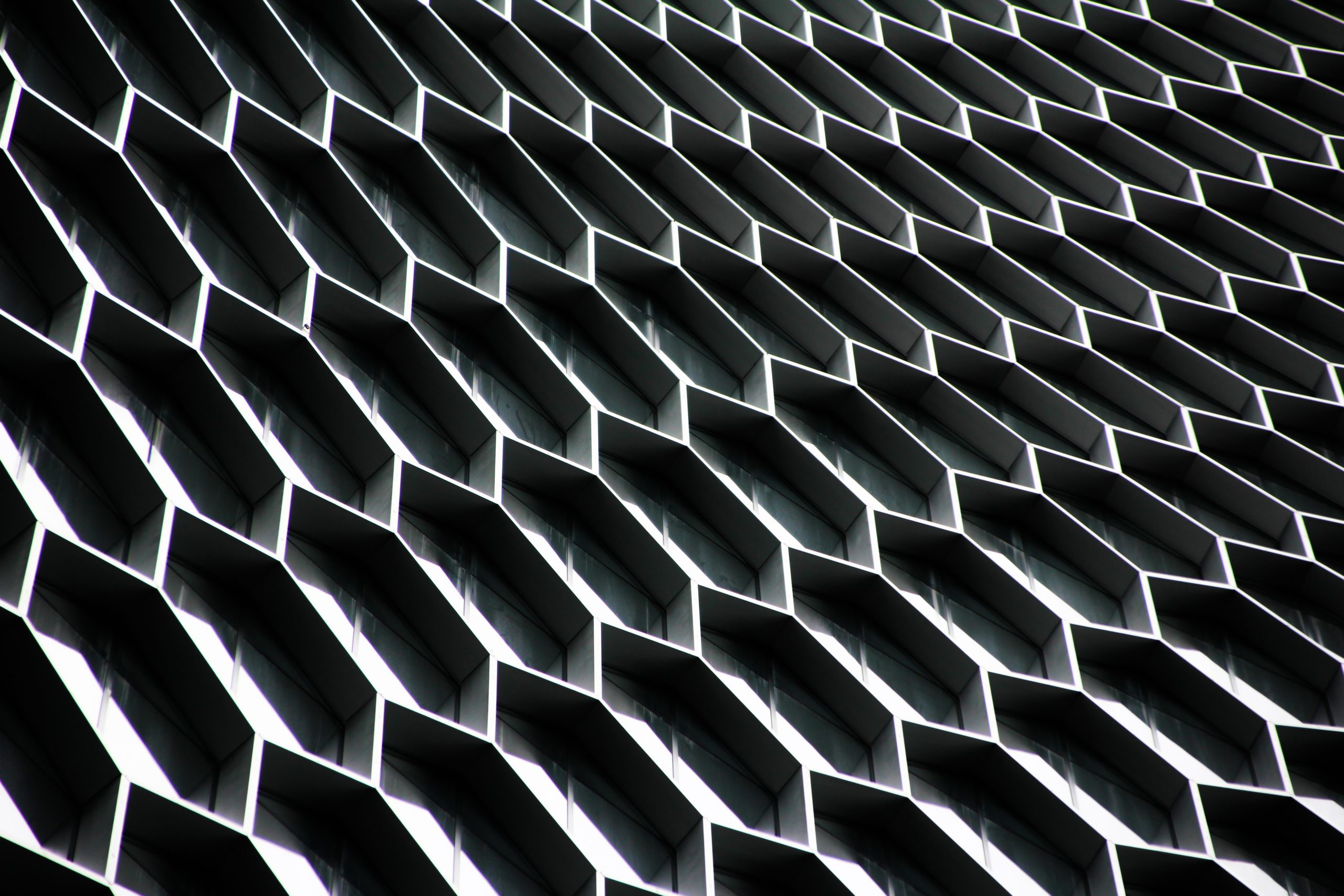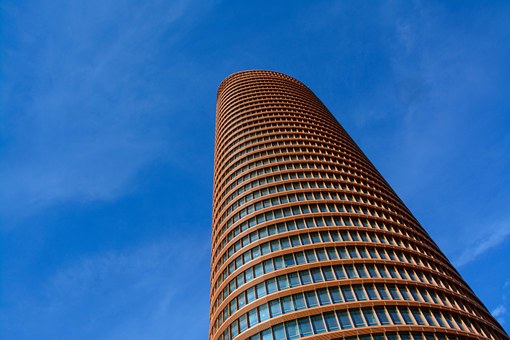Abstract
A building is a living structure. It protects its occupants, regulates heating and air, and conducts other processes to interact with the natural world. Architects have started to design buildings with this in mind, taking inspiration from the diverse flora and fauna of the planet which evolved to interact and benefit from their environment. Biomimetic architecture is a growing field, which looks to the natural world’s conservation techniques for inspiration in making buildings more sustainable.
Living Structures and Biomimicry
What are modern buildings like? Towering high rises come to mind, with sleek, glass facades unbroken by metal frames. Particularly impressive buildings may have complex, curved surfaces that make the structure look more like a work of art than a workplace or home. When walking through any downtown area, it is easy to feel completely removed from nature, but buildings are living environments. Each house, office complex or skyscraper is a complex ecosystem, and architects must consider not only the physical strength of their structure, but also the lighting, heating, and power aspects of the design in order to maintain a balanced environment for people to live or work in.
Buildings also contribute greatly to the degradation of natural resources, but their impact can be mitigated through the integration of building designs that reflect principles of biomimicry. The field of biomimicry focuses on looking at nature for inspiration in technology which also reduces the associated carbon footprint. The construction and power consumption of buildings amount to approximately 30% of global raw material use, 40% of energy use, and 30% of greenhouse gas emissions [1]. However, if buildings are designed and built as living structures – or even as an environment that interacts with its occupants and the world around it – they can have a smaller carbon footprint and preserve more living habitats around them, for a net positive effect on natural resources.
By using biomimicry – which involves biology, chemistry, engineering, and other disciplines – engineers have drawn upon the characteristics of various plants and animals to advance soft-robotics, micro-electromechanics, and other highly technical fields in recent years [2]. Most biomimicry is focused on military defense purposes, but as biomimetic technology advances and becomes commercially available, researchers are exploring the possibility of applying biomimicry to problems in architecture [3].
Heating for buildings is a great example of an area in which biomimicry could help increase efficiency, since many animals are masters of temperature regulation. Fauna native to colder climates have developed thick coats or layers of fat to prevent heat loss. In hotter climates, lizard scales reflect light to prevent overheating in the sun, and the wrinkles characteristic to elephants increase evaporation rates, which in turn keep the elephant cool [4]. The wide variety of evolutionary solutions to temperature regulation in nature provide insight in developing more efficient means of heating buildings.
Smaller Scale Applications
Because buildings are static structures, plants are an easy comparison as they are organisms that are not usually capable of complex, quick movements. The passive processes and characteristics plants have make them attractive models for sustainability in biomimetic architecture because those processes do not use an excess of energy. If an invention designed to reduce electricity consumption has moving parts or hydraulics, the operation of the “electricity reducer” would use up power itself, defeating its purpose. One example of a passive process is the “Lotusan” self-cleaning paint, inspired by the lotus plant [3]. The coating is able to “clean” itself by repelling water through a microstructure characteristic to lotus leaves [4]. The microstructure forces water droplets to roll across the paint’s surface instead of soaking it, and the water droplets pull dust and debris as they roll, cleaning the surface [4].
Honeycomb structures may be the most recognizable biomimetic structures that are inspired by insects. The interlocking hexagonal shapes characteristic to the homes of bees and wasps carry a number of material advantages that humans can also use in construction [5]. If used as a ‘sandwiched plate,’ like in thick sheets of cardboard, the structure uses less material than a solid block but is surprisingly rigid [5]. Honeycombs also have more surface area than a solid block, meaning more heat is dissipated, keeping the hive or building cool. More technical materials, like in Figure 1, are able to be extremely strong, ultra-lightweight, crash resistant, and more because of honeycomb geometry.

Current Implementations
The Eastgate Center in Zimbabwe, diagrammed in Figure 2, is one of the best cases of insect inspired architecture being applied to a building [1]. Local air temperatures can reach 95°F in the summer afternoons and drop close to freezing at nights so temperature control is a necessity for a structure where people will work [6]. The Eastgate Center, completed in 1996, is exceptional in that it does not have traditional air conditioning [1]. The Center draws inspiration from termite mounds; termites are able to keep their mounds at constant temperature by building air tunnels below the mound and packing the walls of those tunnels with wet soil [6]. The Eastgate Center uses a similar design. The seven story building chills its concrete floors overnight with huge fans at its base that pull air from outside [6]. The open spaces of the Center are also connected by stacks, which let warm air efficiently rise and escape, so the overall temperature of the building remains constant [1]. The lack of traditional air conditioning systems allows the Eastgate Center to use much less power, up to half the electricity of a conventional building!

The Singapore Arts Center, pictured in Figure 2, is another case of ingenious biomimetic architecture, though the source of inspiration may be surprising. Singapore is near the equator and is subject to a hot and humid climate nearly year-round. Interestingly, despite this climate, the Singapore Arts Center’s spiky exterior is actually inspired by polar bears [3]! Though polar bears are well known for their white, soft fur, they actually have black skin and are covered in nearly transparent bristles [3]. The bristles can lie flat against the skin, reflecting as much sunlight and heat as possible, or raise to allow heat to be absorbed [3]. The Singapore Arts Center uses the same principle. It is covered in aluminum panels and light sensors, which raise and lower the panels accordingly to dissipate heat but allow light to penetrate into the building. While this system is effective, it wastes electricity because the panels have to be moved by motors. A truly sustainable system would detect light and move without using electricity or other resources.

The Future – Building Skins
A building skin is an envelope that covers exterior walls, the roof, and any openings to the outside world; its goal is to be a passive mechanism that is the primary structure interacting with the outside world [7]. A building skin ideally controls heat, energy, sunlight, plumbing, and other environmental factors without the use of electricity [7]. An aspirational use of building skins is to create an adaptive stadium roof [2]. Each element of the roof – similar to a conventional shingle – would automatically avoid sunlight, unfurling during sunny days and closing up during the rain, all through natural properties of the material [2]. This is the key difference that sets building skins apart from what covers the Singapore Arts Center, but it presents a problem: What material can automatically react to its environment so drastically as to make an effective skin?

The optimal material would be some new synthetic material that perfectly and automatically regulates environmental factors and never wears out; that material doesn’t exist yet, so researchers are investigating a biomimetic approach. Wood – one of the first building materials used by humans – may be the best available material for building skins. While it is not especially reactive to light, wood is reactive to moisture (the natural expansion and contraction is actually something that is mitigated in conventional construction) [8]. The right configuration of wood could use that reactivity to moisture to create a climate control system. Veneer, an extremely thin strip of wood, curls within certain temperature and humidity ranges and uncurls when it leaves those ranges [8]. A configuration like the one in the figure to the right is able to harness the properties of veneers to regulate the temperature of the space it encloses with no electronics or external power [8]. As an organic material, wood decays, which makes it less attractive as a long-term application of building skins, but it does demonstrate that the principles of building skins – to create a living building – is not science fiction [8].
References
[1] M. Garcia-Holguera, O. G. Clark, A. Sprecher, and S. Gaskin. “Ecosystem biomimetics for resource use optimization in buildings.” Building Research and Information, vol 44(3), April 2016. [Online serial]. Available: https://www-tandfonline-com.libproxy1.usc.edu/doi/full/10.1080/09613218.2015.1052315. [Accessed Jan 27, 2020].
[2] S. Poppinga, C. Zollfrank, O. Prucker, J. Rühe, A. Menges, T. Cheng, and T. Speck. “Toward a New Generation of Smart Biomimetic Actuators for Architecture.” Advanced Materials, vol. 30(19), May 2018. [Online serial]. Available: https://onlinelibrary-wiley-com.libproxy1.usc.edu/doi/full/10.1002/adma.201703653. [Accessed Jan. 27, 2020].
[3] H. Aldersey-Williams. “Towards biomimetic architecture.” Nature Materials, vol 3(5), May, 2004. [Online serial]. Available: https://www-nature-com.libproxy1.usc.edu/articles/nmat1119. [Accessed Jan. 27, 2020].
[4] L. Badarnah. “Form Follows Environment: Biomimetic Approaches to Building Envelope Design for Environmental Adaptation.” Buildings, vol. 7(2), January, 2017. [Online serial]. Available: https://search.proquest.com/docview/1939841182?pq-origsite=primo. [Accessed Jan. 27, 2020].
[5] J. Knippers, K. G. Nickel, T. Speck. Biomimetic Research for Architecture and Building Construction: Biological Design and Integrative Structures, 1st ed, pp 57-83. Cham: Springer International Publishing, 2016. [E-book] Available: https://link-springer-com.libproxy1.usc.edu/book/10.1007%2F978-3-319-46374-2. [Accessed Jan 27, 2020].
[6] R. Rivera. “Where you’ll live, work, and play in the 21st century.” Science World, vol 55(10), February 1999. [Online serial]. Available: https://search-proquest-com.libproxy1.usc.edu/docview/218134025?accountid=14749&rfr_id=info%3Axri%2Fsid%3Aprimo. [Accessed Jan. 27, 2020].
[7] A. S. Y. Mohamed. “BIOMIMETIC ARCHITECTURE: Creating a Passive Defense System in building skin to solve Zero Carbon Construction Dilemma.” EQA, vol. 29, May 2018. [Online serial]. Available: https://eqa.unibo.it/article/view/7855. [Accessed Jan. 27, 2020].
[8] S. Reichert, A. Menges, and D. Correa. “Meteorosensitive architecture: Biomimetic building skins based on materially embedded and hygroscopically enabled responsiveness,” Computer-Aided Design, vol. 60, March 2015. [Online serial]. Available: https://www-sciencedirect-com.libproxy1.usc.edu/science/article/pii/S0010448514000438. [Accessed Jan. 27, 2020].




